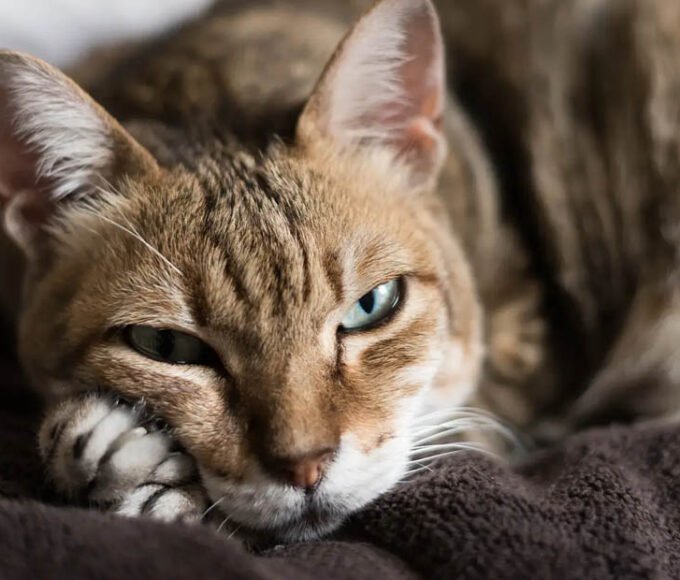Keeping your cat’s litter box clean is crucial for their health and well-being. It’s also important for maintaining a fresh and odor-free home environment. The frequency of litter box cleaning depends on various factors, including the number of cats in the household, the type of litter used, and the preferences of both the cat and the owner. Neglecting to clean the litter box regularly can lead to unpleasant odors, bacterial growth, and even behavioral issues in cats. Understanding how often to clean your cat’s litter box is essential for ensuring a hygienic and comfortable space for your feline friend.
Factors Influencing Litter Box Cleanliness
Several factors influence how often you should clean your cat’s litter box. The number of cats in your household is a significant factor, as multiple cats mean more frequent use of the litter box. Additionally, the type of litter used can impact cleaning frequency. Clumping litter tends to make waste removal easier and may require less frequent cleaning compared to non-clumping litter. The size of the litter box also plays a role. A large cat litter box accommodates more waste and may require less frequent cleaning. The location of the litter box within the home can affect cleaning frequency, with litter boxes placed in high-traffic areas needing more frequent cleaning to prevent odor buildup.
Daily Cleaning Routine
A daily cleaning routine is essential for maintaining a clean and hygienic litter box environment for your cat. This routine involves scooping out solid waste and clumps of urine from the litter box at least once a day. Using a sturdy scoop designed for clumping litter can make this task more efficient and effective. It’s important to dispose of the waste in a sealed bag and empty it into an outdoor trash bin to prevent odors from lingering in the home. Additionally, check the litter box for any signs of soiling or odor throughout the day and address them promptly to ensure a comfortable environment for your cat.
Weekly Litter Box Maintenance
In addition to daily scooping, weekly litter box maintenance is necessary to keep the litter box clean and fresh. This involves emptying the entire contents of the litter box, thoroughly cleaning the box with mild soap and water, and replacing the litter with a fresh layer. It’s essential to use unscented soap to avoid leaving any residual fragrance that may deter your cat from using the litter box. Allow the litter box to dry completely before adding fresh litter to prevent clumping and sticking. While performing weekly maintenance, inspect the litter box for any signs of wear or damage, such as cracks or scratches, and replace it if necessary to ensure your cat’s comfort and safety.
Monitoring Your Cat’s Behavior
Observing your cat’s behavior can provide valuable insights into their litter box preferences and cleanliness needs. Cats are known for their fastidious nature and may exhibit signs of distress or avoidance if the litter box is not cleaned to their satisfaction. Pay attention to your cat’s litter box habits, including frequency of use and any changes in behavior or routine. If you notice any changes, such as avoiding the litter box or urinating outside the box, it may indicate a cleanliness issue that needs to be addressed. Making adjustments to your cleaning routine based on your cat’s behavior can help maintain a harmonious litter box environment and prevent potential litter box aversion.
Creating a Clean and Inviting Litter Box Environment
Creating a clean and inviting litter box environment is essential for encouraging your cat to use the litter box consistently. Choose a quiet and secluded location for the litter box to provide privacy and reduce stress for your cat. Ensure that the litter box is large enough to accommodate your cat comfortably, with at least one extra box per cat in multi-cat households. Experiment with different types of litter to find the one that your cat prefers, and avoid sudden changes that may disrupt their litter box habits. Additionally, consider using litter box liners or mats to simplify cleaning and contain litter scatter. By creating a clean and inviting litter box environment, you can promote your cat’s health and well-being while maintaining a fresh and odor-free home.
Maintaining a clean litter box is essential for your cat’s health and comfort. It’s also important for a pleasant living environment for you and your family. By understanding the factors that influence litter box cleanliness and implementing a regular cleaning routine, you can ensure that your cat has a hygienic and comfortable space to do their business. Daily scooping, weekly maintenance, and monitoring your cat’s behavior are key components of a successful litter box cleaning regimen. Creating a clean and inviting litter box environment involves choosing the right location, litter type, and accessories to meet your cat’s preferences. With proper care and attention, you can maintain a clean and odor-free litter box environment that promotes your cat’s well-being and strengthens your bond with your feline companion.
















